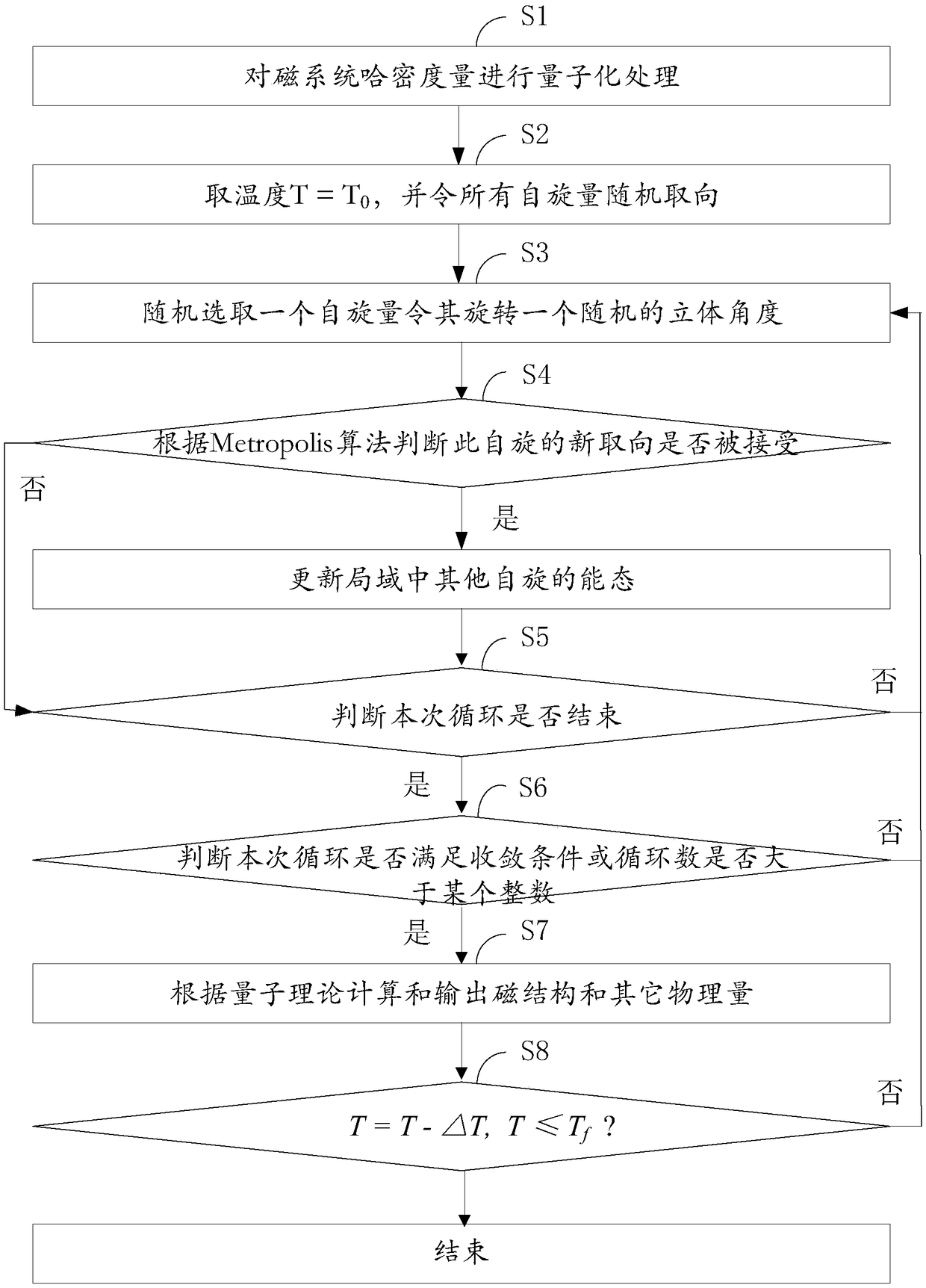Application of optimized quantum Monte-Carlo simulation method in study of complex magnetic systems
A Monte Carlo method and magnetic system technology, applied in special data processing applications, quantum computers, design optimization/simulation, etc., can solve problems such as slowing down calculation speed, achieve the effect of increasing calculation speed and overcoming slow convergence
- Summary
- Abstract
- Description
- Claims
- Application Information
AI Technical Summary
Problems solved by technology
Method used
Image
Examples
Embodiment
[0135] In the following, by simulating Bloch-type and Néel-type two-dimensional ferromagnetic and antiferromagnetic skyrmion crystals, the specific application of the OQMC method is discussed, and its correctness and effectiveness are proved. As mentioned earlier, the Hamiltonian of such a two-dimensional system can be written as:
[0136]
[0137] In the formula, when J ij >0, the system is ferromagnetic coupling; when J ij Bloch-type skyrmions can be simulated; if Then the Néel-type skyrmion can be simulated. In order to simplify the model, only the interaction between the nearest neighbor spins is considered in the following four applications, and it is assumed that they are equal everywhere, that is, J ij = J, D ij =D.
Embodiment 1
[0138] Embodiment 1: Bloch-type two-dimensional ferromagnetic skyrmion crystal (Ferromagnetic Skymion Crystal of Bloch-Type)
[0139] A 30×30 square grid is selected, and each grid point has a spin of S=1. To simulate an infinite two-dimensional system, periodic boundary conditions are employed. Uniaxial anisotropy is not considered here. Let J=1K and let D=1.02733K, then according to relevant theory, we know that the periodic distance λ=10 between skyrmions in the weak vertical external magnetic field.
[0140] figure 2 Draw a ferromagnetic skyrmion array with a hexagonal close-packed structure on a square lattice when B=0.12Tesla and T=1K. It has perfect geometric symmetry and a space period of 10, which is consistent with the theoretical and experimental results[23] .
[0141] Here, the external magnetic field is along the z direction, the z component of the spin magnetic moment in the central region of each skyrmion is along the -z direction, and the z component of th...
Embodiment 2
[0142] Embodiment 2: Bloch-type two-dimensional antiferromagnetic skyrmion crystal (Antiferromagnetic SkymionicCrystal of Bloch-Type)
[0143] A 35×35 square grid is used in the simulation, and there is a spin of S=1 on each grid point. Take J=-1K, D=1K (so D / J=-1), and also neglect the effect of uniaxial perpendicular anisotropy. Periodic boundary conditions are used to simulate infinite two-dimensional systems. In the simulation, it was found that when the vertical applied magnetic field intensity satisfies 3.9Tesla≤B≤4.1Tesla, an antiferromagnetic skyrmion array is induced in the low temperature region of T<1.8K; slightly increasing or weakening the applied magnetic field, the antiferromagnetic The skyrmion crystals disappear, replaced by simple antiferromagnetic structures.
[0144] image 3 , 4 The antiferromagnetic skyrmion lattice at B=4Tesla, T=1K is shown. It has perfect symmetry with a space period λ=7. The average value of the z component of the spin in each s...
PUM
 Login to View More
Login to View More Abstract
Description
Claims
Application Information
 Login to View More
Login to View More - R&D
- Intellectual Property
- Life Sciences
- Materials
- Tech Scout
- Unparalleled Data Quality
- Higher Quality Content
- 60% Fewer Hallucinations
Browse by: Latest US Patents, China's latest patents, Technical Efficacy Thesaurus, Application Domain, Technology Topic, Popular Technical Reports.
© 2025 PatSnap. All rights reserved.Legal|Privacy policy|Modern Slavery Act Transparency Statement|Sitemap|About US| Contact US: help@patsnap.com



